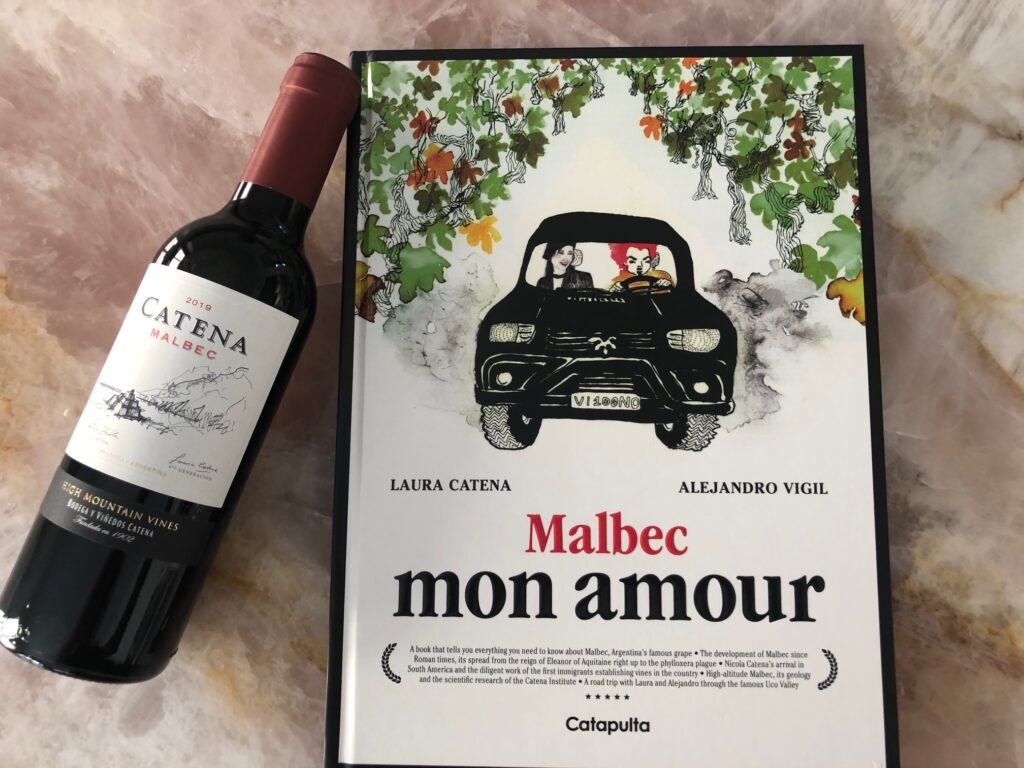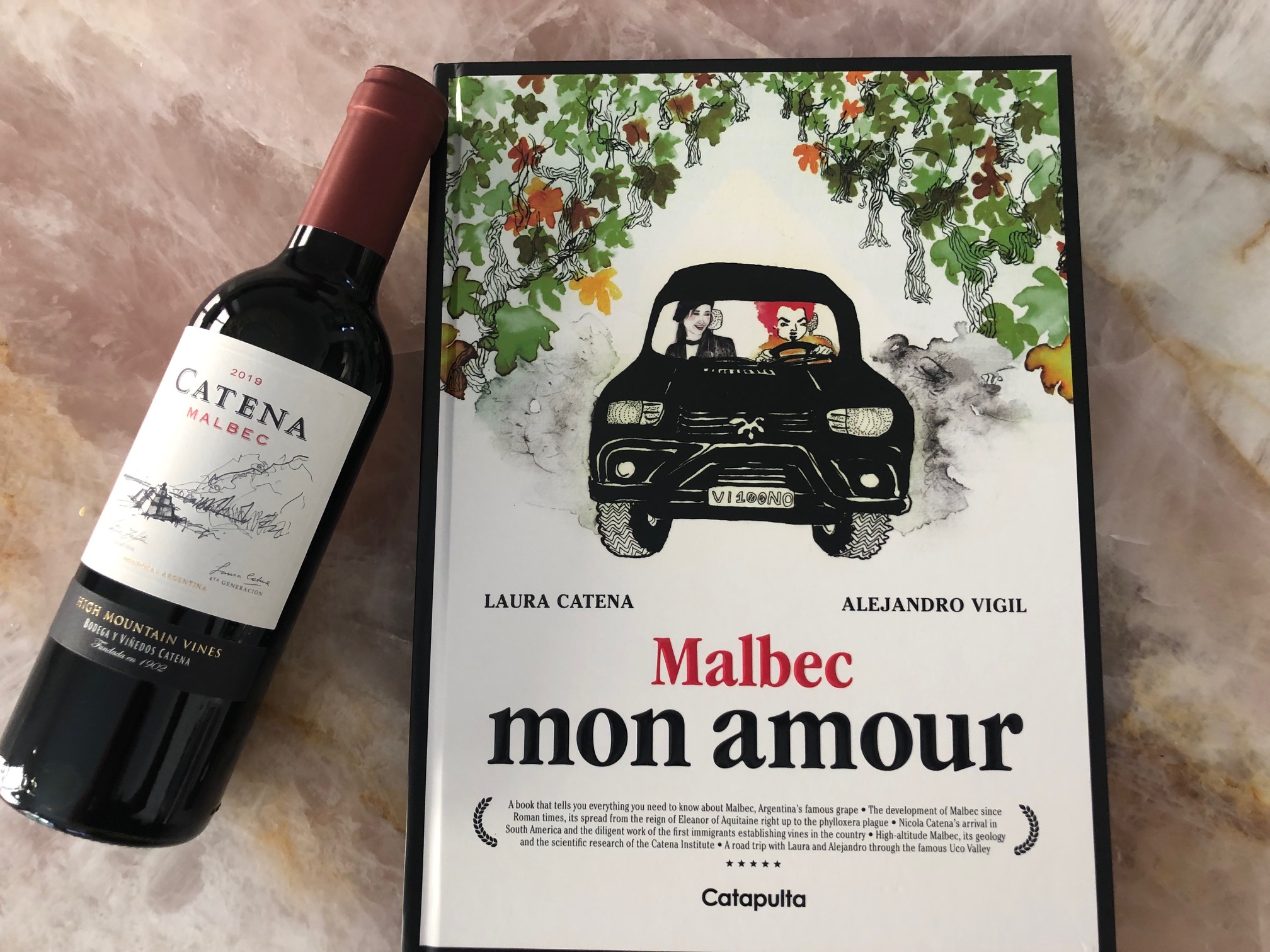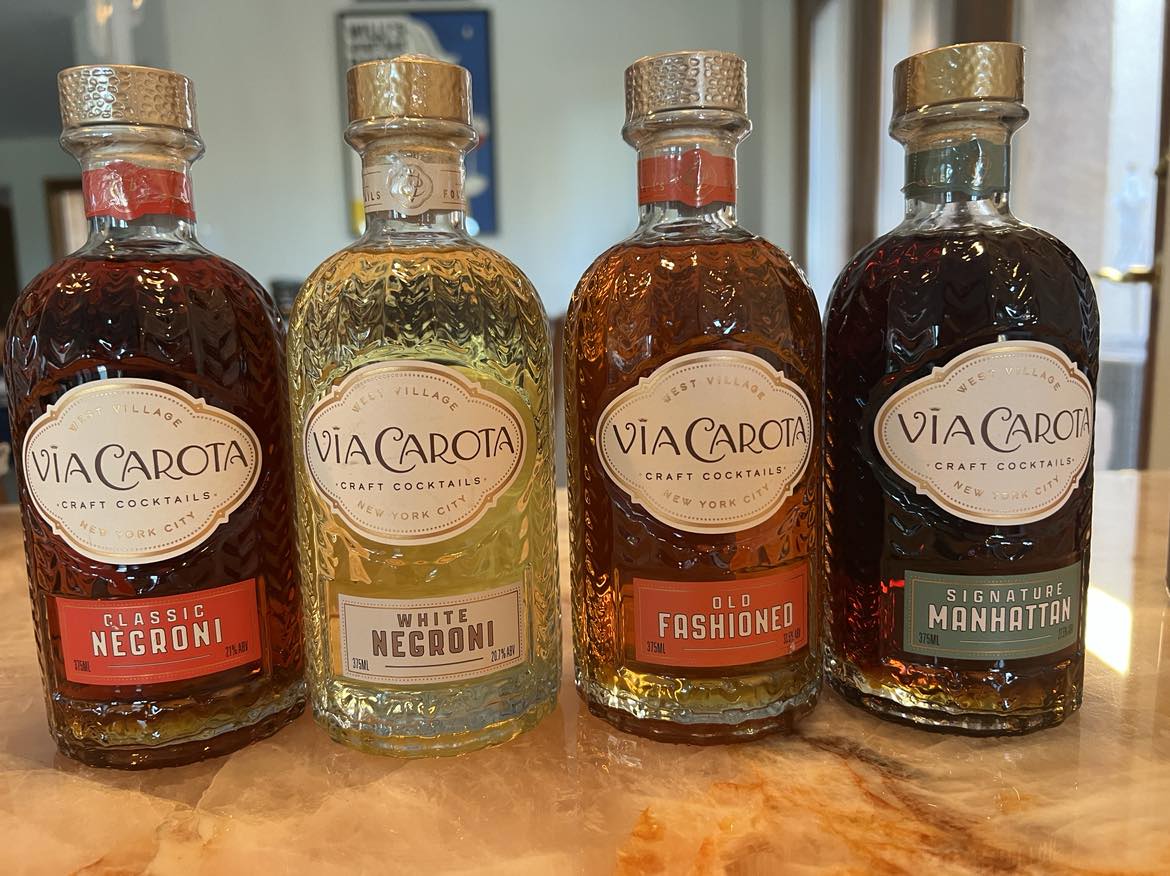Recently offered a book written by a vintner I’ve met and admired for a long time, from a country I haven’t visited, and I jumped on it. Filling in the blanks, I’m sharing details from the publisher, my review of the book and their latest vintage below.
From the Publisher
I wanted to introduce you to a whimsical, yet informative book that has been in the works for over ten years, written by Laura Catena and Bodega Catena Zapata’s oenologist Alejandro Vigil.
Malbec mon amour tells the story of Malbec, a story of near extinction, rebirth and in a joyful end, the story of how a plant has elevated the lives of millions of people for over 2,000 years. Laura and Alejandro had the vision of a book that would reflect the fun and inspiration that Alejandro and Laura experienced in their daily rides throughout the vineyards of Mendoza. Why “mon amour”? Well, Alejandro Vigil has Malbec tattooed on his arm, and Laura’s family’s journey from Italy to Argentina began 120 years ago with a plant of Malbec.
Alejandro and Laura see the world of wine, its ancient history, its terroir, its people, its soils and climate in very romantic and artistic terms. But at the same time, they are both scientists. This illustrated book combines the art and science of wine in a way that has never been done before. It tells the story of how the Malbec variety went from fame to near-extinction and back, and why Malbec is so much more than a wine variety. It is a wine that tells the history of humanity and the journey of immigrants and plants across continents.
The book is currently available on Amazon in North America, Central America, Latin America, and Europe.
Book Review
What a gorgeous book, from the front cover through to the pages, inviting me to really want to get into it and into it I did! As well as the sample of their 2019 Malbec! Get your own book to see the pages and what’s inside, these are my takeaways:

- “According to oral tradition, the Malbec grape expanded from its native Cahors to Bordeaux in the 18th century, introduced by a Hungarian winemaker called Malbeck or Malbek. In Bordeaux, producers used it to lend more color to their claret.”
- Malbec may have been known as “the black wine” due to harvesting at night or the color that stained people’s teeth and tongue.
- At one time England’s Henry III personally protected Cahors Malbec so that Bordeaux officials could not limit any sales or its transportation. And King Francis I of France liked Malbec so much that it was known as the King’s Plant, Plante du Roi.
- One of our authors, Laura Catena, visited Cahors as a “pilgrimage to the original home of Malbec” studying the history and meeting with experts.
- Malbec was just behind Cabernet Sauvignon, as the second most important variety, during the 1855 classification in Bordeaux. The grape was first planted in Argentina in 1853, from vines from Bordeaux, and resulted in a low yield and high quality wine.
- When Phylloxera “wiped Malbec off the map” in Bordeaux it was replaced with Merlot. However, at the same time, Malbec was still doing well in Argentina.
- Manual wine presses were used until the 1950s, some wineries still use this method for “uva francesca” aka the French grape known as Malbec.
- Mendoza, Argentina, is the fifth largest wine producer in the world with 345,000 acres under vine, from hundreds of wineries. Many export their wines worldwide.
- By the end of the 1970s there had been a financial crisis that changed grape production, Malbec was removed for higher-yielding varietals and “most Argentine wines were characterized by somewhat oxidized aromas, a soft mouthfeel, low aromatic intensity and little varietal typicity.”
- In 1984 winemaker Nicolas Catena Zapata had just returned from a tour of Napa, and felt that if Napa could compete with the French (Judgement of Paris) so could Argentina. He planted Chardonnay and Cabernet Sauvignon, updated his winemaking practices and hired Paul Hobbs, a well-known and respected consultant from California.
- “Catena Zapata has the largest selection of Malbec plants in the world.” The Catena Institute, where Alejandro Vigil works as a soil specialist, evaluates the soil’s “behavior with every vintage.” There is a lot of information on how soil effects terroir – and aromas in the finished product.
- Mendoza is a desert, with an average of eight inches of rain per year, and water is 260 to 660 underground. The area requires drip irrigation, and this is generally used prior to bud break.
- The book includes the Winkler Scale of the micro-climates of Mendoza, the Winkler Index charting temperature, the history of the Catena Institute, detailed descriptions of the Malbec vineyards in Mendoza, Uco Valley and other regions, as well as dozens of illustrations, photographs and maps.
Tasting 2019 Catena Malbec
A regal dark purple color, and a nose full of fresh lush fruit – juicy blackberry, crushed plums, blueberry – followed by hints of tri-color peppercorns, bark, moss and very dark sweetened chocolate. The taste reminded me of a bowl of fresh cut fruit – the same as on the nose – as well as layers of dark spices and drying tannins for a lingering finish. I didn’t have my sample with any food, and I didn’t need to. Well done.
Eve Bushman has a Level Two Intermediate Certification from the Wine and Spirits Education Trust (WSET), a “certification in first globally-recognized course” as an American Wine Specialist ® from the North American Sommelier Association (NASA), Level 1 Sake Award from WSET, was the subject of a 60-minute Wine Immersion video (over 16k views), authored “Wine Etiquette for Everyone” and has served as a judge for the Long Beach Grand Cru and the Global Wine Awards. You can email Eve@EveWine101.com to ask a question about wine or spirits.










